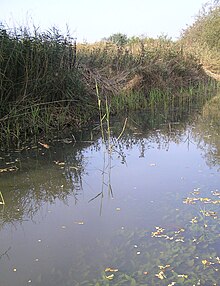| Site of Special Scientific Interest | |
 Fowlmere from the Reedbed Hide | |
| Location | Cambridgeshire |
|---|---|
| Grid reference | TL 406 454 [1] |
| Interest | Biological |
| Area | 39.9 hectares [1] |
| Notification | 1982 [1] |
| Location map | Magic Map |
Fowlmere is a Royal Society for the Protection of Birds nature reserve between Fowlmere and Melbourn in Cambridgeshire. [2] It is designated a 39.9-hectare (99-acre) biological Site of Special Scientific Interest called Fowlmere Watercress Beds. [1] [3] [4]
Contents
Fowlmere's reedbeds and pools are fed by natural chalk springs and a chalk stream runs through the reserve. It has three hides, two of which are wheelchair-accessible. Special birds include kingfishers, water rails, sedge warblers, reed warblers and grasshopper warblers plus a roost of corn buntings in winter.

